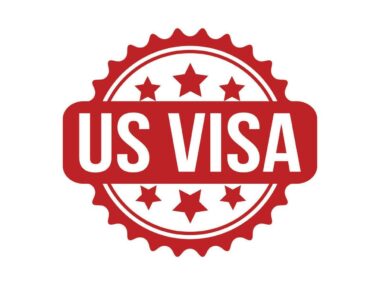Applying for a student visa can seem overwhelming, but it doesn’t have to be. With the right guidance and preparation, you can navigate the process smoothly and secure your visa without the added stress. In this comprehensive guide, I will walk you through each step involved in applying for a student visa, whether you’re planning to study in Canada, the USA, or the UK. With the right information and documents, you’ll be well on your way to achieving your study abroad dreams.
Step 1: Determine Which Student Visa You Need
Before starting your application, it’s important to know which type of student visa you need for your destination country. Different countries have different visa types depending on the level of study (undergraduate, graduate, or postgraduate), as well as the duration of your stay.
Common Types of Student Visas:
- Canada:
The most common student visa for Canada is the Study Permit. If you’re studying for more than six months, this is the visa you will need. - USA:
The USA offers the F-1 Visa for academic students and the M-1 Visa for vocational students. The F-1 visa is the most common for those attending college or university. - UK:
The UK offers the Tier 4 (General) Student Visa for students who are 16 or over and have been offered a place on a course at a recognized institution.
Make sure you apply for the visa that matches your specific situation and destination.
Step 2: Get Accepted to a Recognized Institution
In order to apply for a student visa, you must first gain acceptance to a recognized educational institution in your destination country. Most countries require proof of enrollment before issuing a visa.
What You Need:
- Acceptance Letter:
You will need an official offer letter from a university or school confirming that you have been accepted to study there. - Proof of Funding:
Many countries require proof that you can financially support yourself during your stay, including tuition fees and living expenses. This could include bank statements, scholarship offers, or sponsorship letters.
Make sure that your acceptance letter includes all the necessary details such as your program’s start and end dates, the course of study, and your student status.
Step 3: Gather the Necessary Documents
Once you’ve been accepted to a recognized institution, the next step is to gather the required documents for your visa application. These documents will vary depending on the country, but there are several common documents that you will likely need for all student visa applications.
Common Documents for Student Visa Applications:
- Valid Passport:
Ensure your passport is valid for at least six months beyond the date you intend to return to your home country. - Visa Application Form:
Complete the visa application form online or at the local embassy or consulate. - Passport-Sized Photos:
Provide recent passport-sized photos as per the visa specifications. - Proof of Financial Support:
Bank statements, scholarship letters, or proof of income to show you can financially support yourself. - Proof of Health Insurance:
Depending on the country, you may need to show proof of adequate health insurance coverage. - Language Proficiency Test Results (if required):
Some countries, like the USA, may require proof of English language proficiency (such as TOEFL or IELTS).
Bonus Tip:
Make sure to keep copies of all your documents and verify that they meet the visa office’s requirements. Each country may have slightly different requirements, so check the official visa website of your destination for the exact list of documents.
Step 4: Complete the Visa Application Form
Once you have all the required documents, the next step is to complete the visa application form. Most countries now offer an online application process, which makes the application process more convenient.
What You Should Do:
- Fill Out the Application Form:
Carefully fill out the application form with accurate and truthful information. Mistakes or omissions can delay your application. - Pay the Application Fee:
Most countries charge a non-refundable fee for processing your student visa application. Be prepared to pay this fee as part of the application process. - Book a Visa Appointment (if required):
Depending on the country, you may need to schedule an appointment at the embassy or consulate for an interview or biometric data collection.
Bonus Tip:
If you’re applying online, take your time to review the application before submitting it. Ensure that all fields are filled correctly and that all required documents are uploaded.
Step 5: Attend the Visa Interview (If Required)
For some countries, like the USA, you may be required to attend a visa interview at the embassy or consulate. The interview is an opportunity for the visa officer to assess your application and verify the authenticity of your documents.
What You Should Do:
- Prepare for the Interview:
Be ready to answer questions about your study plans, why you chose the specific institution, and how you plan to fund your studies. It’s important to be confident and clear in your responses. - Bring Your Documents:
Bring all required documents to the interview, including your passport, application form, and any other supporting materials.
Bonus Tip:
Stay calm during the interview and remember that it’s simply a process to confirm your eligibility for the student visa. If you don’t know the answer to a question, it’s okay to ask for clarification.
Step 6: Wait for Your Visa Approval
After your interview (if required), the final step is to wait for your visa to be processed. The processing time for student visas varies depending on the country, but it usually takes several weeks to months. It’s important to apply well in advance of your intended start date to allow enough time for processing.
What You Should Do:
- Track Your Application:
Many countries allow you to track the status of your visa application online. Use this to stay updated on the progress. - Prepare for Your Arrival:
While you wait for approval, start preparing for your journey. This includes arranging accommodation, booking your flight, and familiarizing yourself with the culture and lifestyle of your destination country.
Bonus Tip:
Be patient during this stage. If you haven’t heard back in the expected timeframe, you can contact the embassy or consulate for an update, but avoid rushing them.
Step 7: Receive Your Visa and Prepare to Travel
Once your student visa has been approved, you’ll receive your visa approval notice, which will include details on how and when you can pick up your visa or receive it by mail.
What You Should Do:
- Double-Check Your Visa:
Ensure that your visa is correct and matches the details on your passport. This includes your name, study program, and dates of validity. - Prepare Your Travel Documents:
Keep your student visa, passport, and other important documents in an easily accessible location during your travels.
Bonus Tip:
Take note of any special instructions on your visa, such as restrictions on working while studying or travel limitations.
Top 5 Tips to Get Approved for Your Student Visa Easily
Securing a student visa is a crucial step in your journey to studying abroad, and having your application approved quickly and smoothly can relieve much of the stress. While each country has specific requirements and procedures, there are a few general tips that can increase your chances of approval. In this post, I’ll share 5 tips to get approved for your student visa easily, making the application process as smooth as possible.
1. Ensure All Your Documents Are Complete and Accurate
One of the easiest ways to get your student visa approved is to make sure all your documents are in order and accurately reflect your personal information and plans.
Why It Matters:
Embassies and consulates receive a large number of visa applications and may reject yours if your documents are incomplete or have errors. Even small mistakes can delay or deny your visa approval.
What You Should Do:
- Double-check your documents: Review your passport, visa application form, acceptance letter from the educational institution, proof of financial support, and any other required materials for accuracy.
- Use checklists: Many countries provide checklists for student visa applicants, which can help you make sure you’re submitting everything that’s needed.
- Keep copies: Always keep copies of all your documents in case any are misplaced or if you need to submit them again.
By ensuring that your application is complete and error-free, you’ll show that you are serious and organized, which can positively influence the visa officer’s decision.
2. Show Proof of Financial Stability
Most countries require that you prove you have enough money to cover your tuition fees, living expenses, and any other costs while studying abroad. This shows that you won’t need to rely on illegal work or public funds during your stay.
Why It Matters:
Visa officers want to make sure you can financially support yourself while studying. If you don’t provide sufficient proof of funds, your visa may be rejected.
What You Should Do:
- Provide bank statements: These should show that you have enough money to support yourself. If someone else is sponsoring you, provide their financial documents as well.
- Include scholarship letters: If you’ve been awarded a scholarship, attach official proof that covers your tuition and living expenses.
- Clarify your income sources: If you have a part-time job, show pay slips or contracts that indicate a reliable income.
By proving that you have the financial means to study abroad, you will give the visa officer peace of mind that you won’t face financial difficulties during your studies.
3. Be Clear About Your Intentions and Future Plans
One of the main reasons student visa applications are rejected is because the visa officer doesn’t believe the applicant will leave the country once their studies are completed. You need to convince them that your primary reason for being in the country is to study and that you have plans to return to your home country afterward.
Why It Matters:
Visa officers are cautious about approving students who may overstay their visa or have unclear intentions about their future. Being transparent about your intentions helps alleviate these concerns.
What You Should Do:
- Explain your study plans clearly: In your application or during your visa interview, clearly explain why you chose the particular program and institution and how it fits into your career goals.
- Discuss your future career: Share your future career plans and explain how studying abroad will help you achieve them. If possible, highlight any ties you have to your home country (such as family, a job offer, or business interests).
- Show evidence of strong ties: Provide evidence that you have significant reasons to return home, such as property ownership, family, or job prospects in your country.
By showing that you have a clear academic and professional path, you’ll convince the visa officer that you are coming to study and will leave once your studies are completed.
4. Prepare for the Visa Interview
In many cases, the student visa application process includes a visa interview. This is your opportunity to speak directly with a visa officer, so it’s important to be well-prepared.
Why It Matters:
A positive interview can make a huge difference in the approval process. Conversely, being unprepared or giving inconsistent answers could raise doubts about your application.
What You Should Do:
- Practice common questions: Be ready to answer questions about your academic background, why you chose your study program, your financial situation, and your future career plans.
- Stay calm and confident: Visa officers look for candidates who are confident in their plans and have clear reasons for studying abroad. Avoid being nervous, as it may be interpreted as uncertainty.
- Bring all documents: Ensure you have all your documents with you during the interview, including your passport, visa application form, financial documents, and acceptance letter.
Being prepared for the visa interview will show that you are serious about your studies and are well-organized, which can significantly increase your chances of approval.
5. Apply Early and Be Patient
One of the best tips to make your student visa application process easier is to apply well in advance. Visa processing times can vary greatly, and by applying early, you give yourself ample time to gather all the necessary documents, attend interviews, and wait for your application to be processed.
Why It Matters:
If you apply late, you may be rushed during the application process or miss important deadlines. Additionally, visa processing delays can sometimes cause last-minute stress.
What You Should Do:
- Apply as early as possible: Start your application as soon as you receive your acceptance letter. Aim to apply at least three to four months before your intended travel date.
- Track your application status: Use any online tracking tools provided by the embassy or consulate to stay updated on the status of your application.
- Be patient: Visa processing can take time, and it’s important to remain patient. Avoid contacting the embassy too frequently unless absolutely necessary.
By applying early, you’ll ensure that you have plenty of time to handle any issues that may arise and avoid unnecessary stress as you prepare to study abroad.
Conclusion
Applying for a student visa may seem like a complex process, but with careful planning and the right documentation, you can easily navigate the steps. Start by ensuring that you meet all the eligibility requirements, gather the necessary documents, complete your application accurately, and attend your visa interview if required. Remember, each country has its own specific guidelines, so be sure to check the official government websites for up-to-date information.
By following this step-by-step guide, you’ll be well on your way to securing your student visa and starting your exciting journey to study abroad. Good luck!





